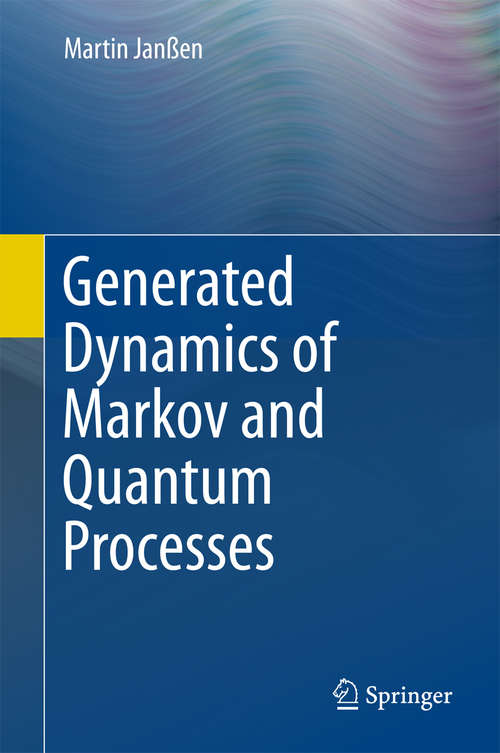Generated Dynamics of Markov and Quantum Processes
By:
Sign Up Now!
Already a Member? Log In
You must be logged into Bookshare to access this title.
Learn about membership options,
or view our freely available titles.
- Synopsis
- This book presents Markov and quantum processes as twosides of a coin called generated stochastic processes. It deals withquantum processes as reversible stochastic processes generated byone-step unitary operators, while Markov processes are irreversible stochasticprocesses generated by one-step stochastic operators. The characteristicfeature of quantum processes are oscillations, interference, lots of stationarystates in bounded systems and possible asymptotic stationary scattering statesin open systems, while the characteristic feature of Markov processes arerelaxations to a single stationary state. Quantum processes apply to systemswhere all variables, that control reversibility, are taken as relevantvariables, while Markov processes emerge when some of those variables cannot befollowed and are thus irrelevant for the dynamic description. Their absencerenders the dynamic irreversible. Afurther aim is to demonstrate that almost any subdiscipline of theoretical physicscan conceptually be put into the context of generated stochastic processes. Classical mechanics and classical field theory are deterministic processeswhich emerge when fluctuations in relevant variables are negligible. Quantummechanics and quantum field theory consider genuine quantum processes. Equilibrium and non-equilibrium statistics apply to the regime where relaxingMarkov processes emerge from quantum processes by omission of a large number ofuncontrollable variables. Systems with many variables often self-organize insuch a way that only a few slow variables can serve as relevant variables. Symmetries and topological classes are essential in identifying such relevantvariables. Thethird aim of this book is to provide conceptually general methods of solutionswhich can serve as starting points to find relevant variables as to apply best-practice approximation methods. Such methods are available through generatingfunctionals. The potential reader is a graduate student whohas heard already a course in quantum theory and equilibrium statisticalphysics including the mathematics of spectral analysis (eigenvalues,eigenvectors, Fourier and Laplace transformation). The reader should be openfor a unifying look on several topics.
- Copyright:
- 2016
Book Details
- Book Quality:
- Publisher Quality
- ISBN-13:
- 9783662496961
- Publisher:
- Springer Berlin Heidelberg, Berlin, Heidelberg
- Date of Addition:
- 10/14/16
- Copyrighted By:
- Springer
- Adult content:
- No
- Language:
- English
- Has Image Descriptions:
- No
- Categories:
- Nonfiction, Mathematics and Statistics
- Submitted By:
- Bookshare Staff
- Usage Restrictions:
- This is a copyrighted book.
